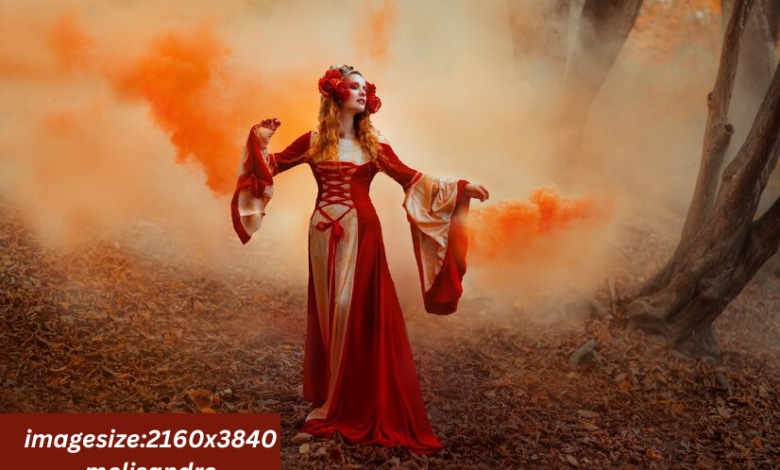The Enigmatic Power of Melisandre: The Red Priestess of Fire and Shadow

Melisandre, often referred to as the Red Woman, is one of the most mysterious and compelling characters in Game of Thrones and A Song of Ice and Fire. With her striking red robes, glowing ruby choker, and unwavering faith in the Lord of Light, she commands both fear and fascination. Her prophecies, magical abilities, and pivotal role in the War of the Five Kings and the Great War against the White Walkers make her a central figure in the series. This article delves deep into her origins, powers, motivations, and legacy, while also addressing frequently asked questions about her character.
From her enigmatic arrival at Dragonstone to her dramatic end in the battle against the Army of the Dead, Melisandre’s journey is filled with divine visions, dark sorcery, and controversial decisions. Whether she is seen as a savior or a manipulative zealot, her impact on the world of Westeros is undeniable.
1. The Origins and Background of Melisandre
Melisandre’s past remains shrouded in mystery, much like the religion she serves. Born as a slave in the city of Asshai, a land steeped in shadow magic and ancient secrets, she was originally named Melony. Little is known about her early life, but she was eventually sold to the Red Temple, where she became a priestess of R’hllor, the Lord of Light.
Her transformation into Melisandre, the fiery prophetess, was marked by rigorous training in the arts of prophecy, shadowbinding, and flame reading. The Red Priests and Priestesses of Asshai believe in the eternal struggle between light (R’hllor) and darkness (the Great Other), and Melisandre fully embraced this doctrine. Her journey to Westeros was driven by her visions—flames that showed her the coming of the Prince That Was Promised, a legendary hero destined to save the world from eternal night.
Her faith in these visions led her to Stannis Baratheon, whom she believed was the chosen one. However, as events unfolded, it became clear that her interpretations were not always accurate, raising questions about the reliability of divine prophecy.
2. The Powers and Abilities of the Red Priestess
Melisandre’s abilities set her apart from ordinary humans, making her one of the most formidable magic-wielders in Game of Thrones. Her powers are derived from her deep connection to R’hllor, and they include:
A. Shadowbinding and the Birth of the Shadow Assassin
One of her most terrifying abilities is shadowbinding—the power to create living shadows that can kill on command. She used this dark magic to assassinate Renly Baratheon and Ser Cortnay Penrose, ensuring Stannis’s path to power. The act required her to sleep with Stannis and conceive a shadow in the process, demonstrating the intimate and dangerous nature of her magic.
B. Resurrection and the Kiss of Life
Like Thoros of Myr, Melisandre had the potential to bring the dead back to life using the “Last Kiss,” a ritual where the priest breathes fire into a corpse. Though she never performed it in the books or show, her knowledge of resurrection suggests she could have if necessary.
C. Glamour and Illusions
Her signature ruby choker is more than an ornament—it is a magical tool that allows her to cast glamours (illusions). She used this power to disguise Mance Rayder and to maintain her own eternally youthful appearance, hiding her true aged form.
D. Prophecy and Flame Visions
Melisandre constantly sought guidance in the flames, receiving fragmented visions of the future. However, her interpretations were often flawed, leading to catastrophic mistakes, such as burning Shireen Baratheon alive in a misguided attempt to fulfill destiny.
3. Melisandre’s Role in the War of the Five Kings
Melisandre’s influence on Stannis Baratheon was both a blessing and a curse. She convinced him that he was Azor Ahai reborn, the prophesized hero destined to defeat darkness. Her magic gave him victories, but her extremism alienated his allies.
A. The Assassination of Renly Baratheon
Her shadow assassin killed Renly, eliminating one of Stannis’s biggest rivals. However, this act also turned many against Stannis, branding him a kinslayer and a puppet of dark magic.
B. The Burning of the Seven Idols at Dragonstone
Melisandre persuaded Stannis to abandon the Faith of the Seven and embrace the Lord of Light, leading to the public burning of religious icons. This radical shift further divided his followers.
C. The Sacrifice of Shireen Baratheon
One of her most controversial decisions was convincing Stannis to burn his daughter, Shireen, as a sacrifice to R’hllor. This act, meant to ensure victory, instead led to Stannis’s downfall and Melisandre’s temporary exile.
4. Melisandre’s Redemption and Role in the Great War
After fleeing from Stannis’s camp, Melisandre returned to Essos but later came back to Westeros with a renewed purpose—to aid in the fight against the Night King.
A. Resurrecting Jon Snow
Though she did not perform the ritual herself, her presence at Castle Black and her guidance ensured that Jon Snow was brought back to life, fulfilling part of the Azor Ahai prophecy.
B. The Battle of Winterfell
In the final battle against the Army of the Dead, Melisandre played a crucial role by using her magic to light the Dothraki swords with fire and later illuminating the trenches, giving the living forces a fighting chance.
C. Her Final Prophecy and Death
After the battle, having fulfilled her purpose, she removed her enchanted choker, revealing her true ancient form before collapsing into ashes. Her death was a poetic end—a final surrender to the Lord of Light after centuries of service.
5. The Legacy of Melisandre: Savior or Deceiver?
Melisandre’s legacy is complex. To some, she was a divine messenger who helped defeat the White Walkers. To others, she was a fanatic whose misinterpretations caused immense suffering. Her story raises profound questions about faith, destiny, and the cost of blind belief.
Her character also serves as a critique of religious extremism—how prophecy can be manipulated, how power can corrupt, and how even the most devout can falter. Yet, in the end, she played a vital role in the survival of humanity, proving that her faith, though flawed, was not entirely misplaced.
Frequently Asked Questions (FAQs) About Melisandre
1. How old was Melisandre really?
In the books, it is hinted that she is centuries old, using magic to maintain a youthful appearance. Her true age is never confirmed, but she is far older than she looks.
2. Why did Melisandre burn Shireen?
She believed that sacrificing Shireen would grant Stannis victory by appeasing R’hllor. However, the act backfired, leading to his army’s desertion and his eventual defeat.
3. Was Melisandre wrong about Stannis being Azor Ahai?
Yes. Her visions were misinterpreted—Jon Snow and Daenerys Targaryen were more likely candidates for the prophecy.
4. What was the significance of her ruby choker?
The choker was a magical artifact that maintained her glamour, hiding her true aged appearance.
5. Why did Melisandre die after the Battle of Winterfell?
Having fulfilled her purpose in the war against the dead, she chose to release her magic, allowing herself to die peacefully.
Conclusion
Melisandre remains one of the most enigmatic and polarizing figures in Game of Thrones. Her unwavering faith, powerful magic, and tragic mistakes make her a deeply layered character. Whether viewed as a prophetess or a manipulator, her impact on the fate of Westeros is undeniable. Her story serves as a reminder of the dangers of fanaticism and the elusive nature of destiny. In the end, despite her flaws, she played a crucial role in the dawn of a new age—proving that even the most controversial figures can shape history.



